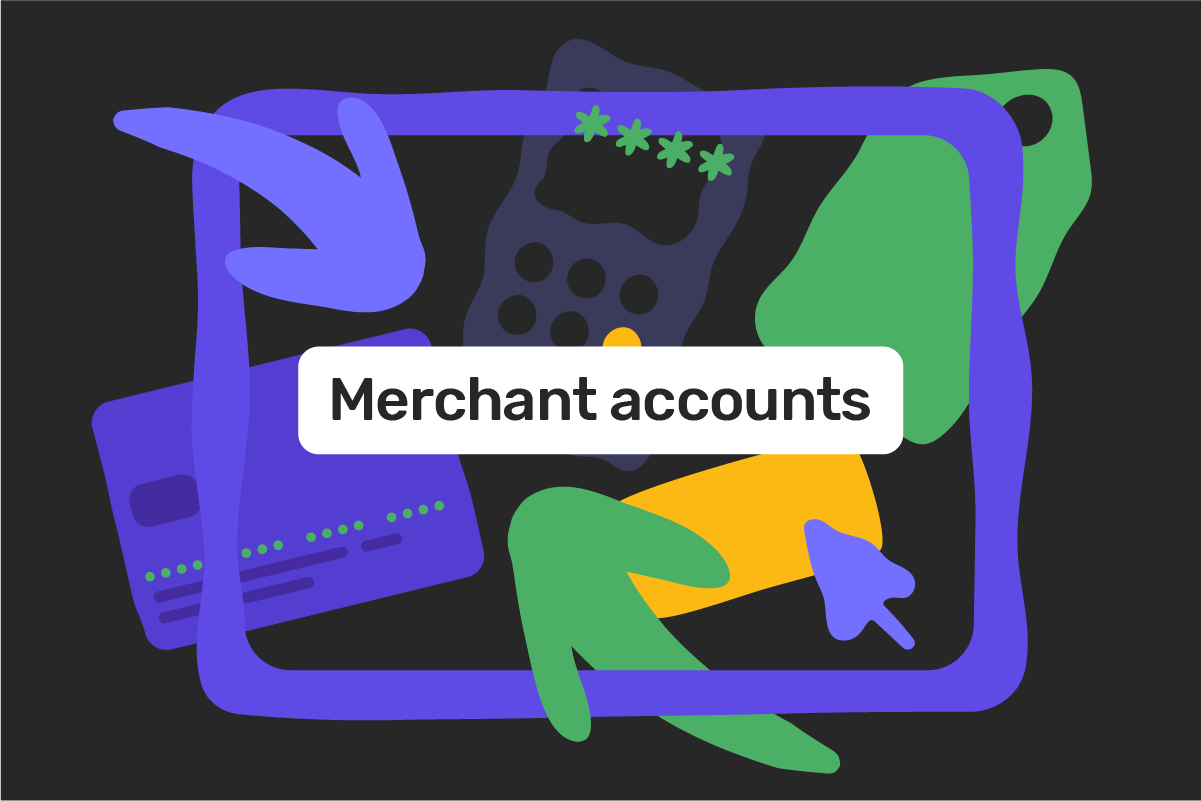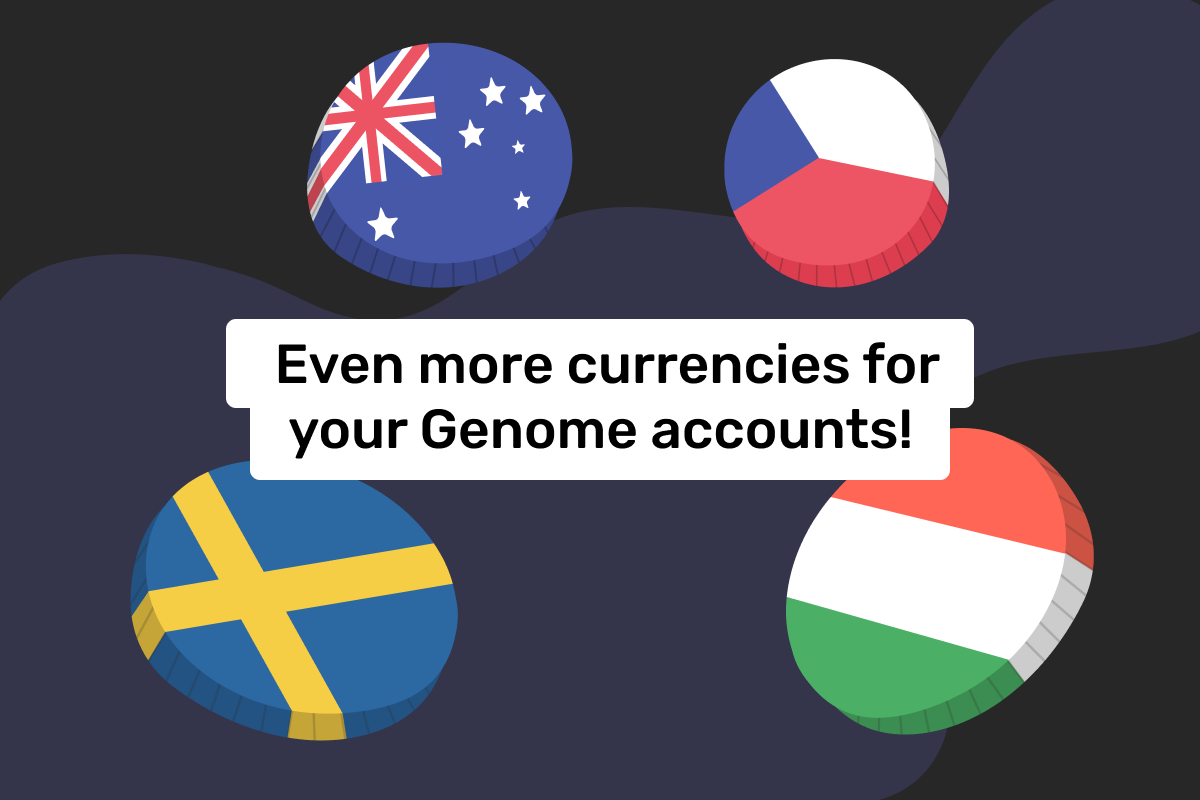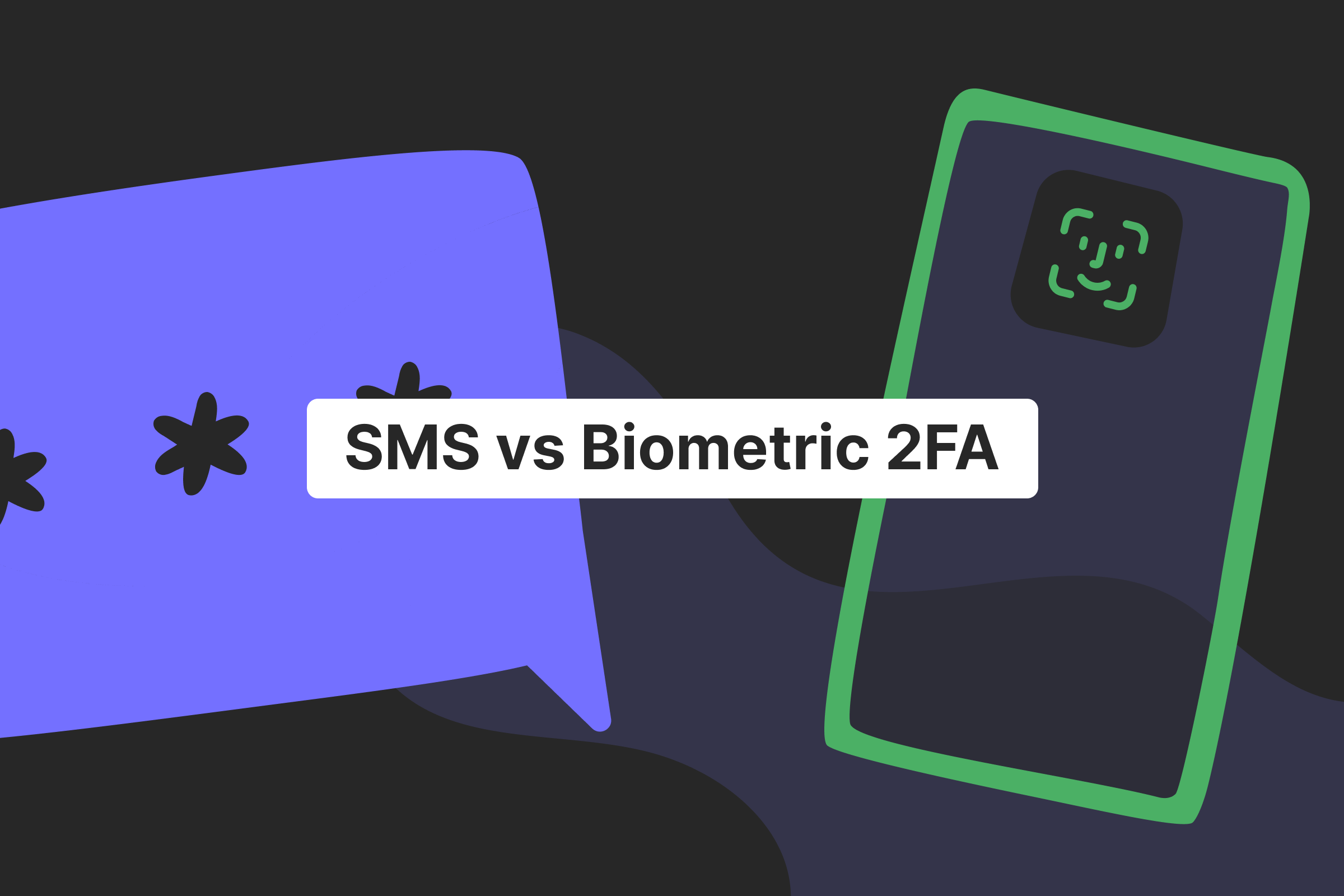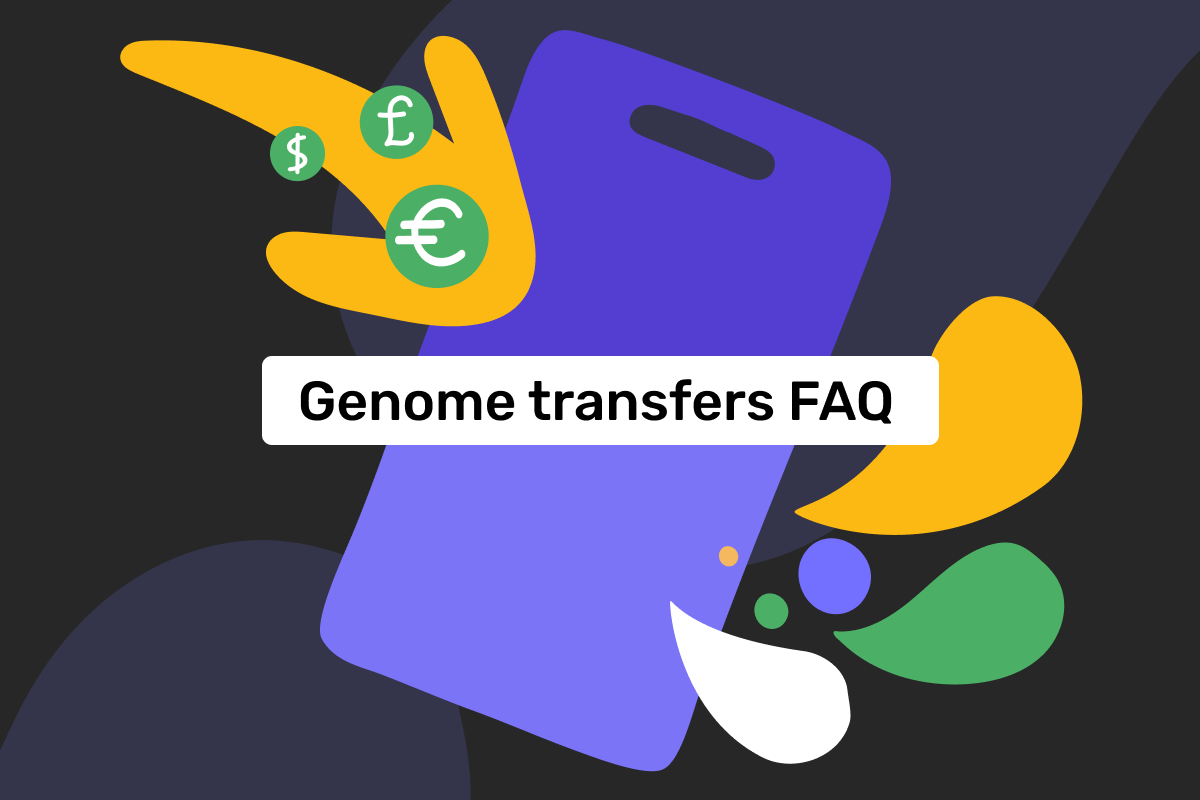Please note that Genome’s merchant services have been temporarily unavailable since September 2024.
Merchant accounts are a very common topic when it comes to discussing financial services. That’s not surprising at all! Such interest comes from multiple companies that are not sure how to get a merchant account, and whether they need it in the first place.
If you are looking for answers to similar questions, Genome’s team is here to help! This time we will go through the most common queries regarding merchant accounts. Make sure to stick around till the end of the article: we will tell you how to quickly apply for a merchant account within Genome!
What is a merchant account?
This is a kind of business account that companies need to accept electronic payments from credit and debit cards. All the money you get from the customers is transferred to the merchant account after the transactions have been processed.
To open a merchant account, your company needs to find a merchant acquiring bank, or a reliable payment service provider, like Genome.
One crucial thing to know: you can’t access the funds while they are on your merchant account. But don’t worry – you will get your money eventually. They will be transferred to the business account, where you can use them as you see fit.
Note, that there will be a settlement period between the time the money from your merchant account is transferred to the business one. The settlement period differs between financial institutions, but it usually lasts 3 to 7 working days. Some banks and PSPs allow you to negotiate the settlement period and make it shorter.
We advise you to check out Genome’s article to learn more about the difference between business and merchant accounts.
Now that you understand what is a merchant account, let’s dive into the different types of merchant accounts.
Types of merchant accounts
There’s a couple of specifics that differentiate between merchant accounts, dividing them by types, which are:
An aggregated merchant account. This is a type of account you get when you use the services of a payment facilitator. The payment facilitator becomes an intermediary between a merchant and an acquiring bank. Your company actually gets grouped into a pool with other businesses that sell similar goods within a larger merchant account. This account option is usually better for small and medium companies.
A dedicated merchant account. This is an account you get directly from an acquiring bank, which is a method many large businesses prefer. Usually, aggregated accounts offer faster application and setup periods, while with dedicated accounts you are more in control of the account.
A high-risk merchant account. Businesses generally fall under low-risk and high-risk categories. A company can be classified as high-risk because of the industry it is a part of, the country it is settled in, or, more commonly, because of the large number of chargebacks it deals with. Some of the high-risk industries are dating, gaming, gambling, transportation, adult entertainment, subscription-based services, etc.
As you might have guessed, a high-risk merchant account is an account that caters specifically to these types of businesses. You see, not all banks and payment service providers can offer services to high-risk merchants due to, well, risks. And those financial institutions that work with high-risk companies often have to charge much larger fees for their services. If you aren’t sure whether your company falls under the high- or low-risk category, don’t worry – the acquiring banks will assess this parameter and tell you the verdict.
Do I need to set up a merchant account for a small business?
No matter the size, a business is a business. And if you plan on accepting any payments other than cash, you need a merchant account.
If you have a small business and it is pretty new, opening a merchant account may seem intimidating at first. That is why we suggest you note a couple of important things:
Do research
Evaluate who is the primer audience for your products\services. Find out which payment methods they prefer. We are talking not only about credit and debit cards, but alternative payment methods (APMs) as well.
This information will be crucial when choosing a bank or a Fintech for merchant account services. You see, not all financial institutions will allow you to accept different payment methods on your website. But providing clients with APMs is important: to grow your clientele beyond the domestic market, and to show it that you are ready to accommodate.
For instance, you can apply for a merchant account at Genome and get a plethora of alternative payment methods. Among some of the APMs are Alipay, Skrill, Neteller, WeChat Pay, Paysafecard, and more.
Make sure your website is ready
We live in times when most companies go online fully, or at least partially. For one, you don’t need to look for physical space to sell the goods or hire additional personnel.
Still, there are things you need to take care of when you trade online. The most obvious one is your website. Because you can’t see customers face to face, there are security precautions put into place to ensure the payments’ safety. For more info on that, check out the article: “How to securely accept credit card payments online”.
You also need to have certain things displayed on the website to open a merchant account. These include:
Terms and conditions, as well as the privacy policy. This one is self-explanatory. Make sure this information is transparent and comprehensive.
Merchandise description. The way you present your goods and services is essential. You must be as clear as possible when describing these, with pictures attached. This will help minimize the number of chargebacks occurring due to people’s dissatisfaction with the product (i.e. the description differs from the actual product);
Delivery policy. Just like in the case with merchandise description, you want your customers to know exactly how long it will take their products to arrive, and whether they can track them.
Refund policy. To avoid unnecessary chargebacks, you need to explain to customers that you can resolve a dispute via the refund procedure. Find out the difference between chargebacks and refunds in this article.
Logos of payment methods. Display the logos of payment methods you accept on the main page of your website and/or the checkout page.
Make sure your website is safe: first of all, get an SSL certificate, which will allow ton encrypt the data exchanged between a website and its customers.
Last, but not least, make sure that you comply with the Payment Card Industry Data Security Standard. PCI DSS is a set of rules established to protect the cardholder’s data when it is being stored, transferred, and processed. To set up a merchant account, a business needs to follow these rules.
Ensure you meet the requirements
Aside from preparing your website, you should also be ready to provide the merchant service provider with certain information or to take additional steps:
A business license. A bank will likely ask you to provide the business license, thus, make sure to obtain it first;
A business account. You will need this type of account, as the money from your merchant account will be transferred to it. Start a business account, before applying for the merchant one. By the way, within Genome, you can apply for both business and merchant accounts online! More on that – further down in the article.
Your processing amounts. A bank or PSP needs to know how many transactions you process, and also may require additional financial information;
Evaluate the possible merchant account providers
As was mentioned before, you can either refer to a bank, or a payment service provider to open a merchant account and accept payments. There are many options on the market, but you should stay cautious at all times: you don’t want to get a merchant account, and then find out that it doesn’t suit your needs.
Pay close attention to:
Which payment methods will be available to your clients;
Are all the countries you want to work with covered;
Are there enough security tools to protect your money from fraud and chargebacks;
The fees you will need to pay for using a merchant account and other services;
Which merchant account provider should I go with?
When applying for a merchant account, you should thoroughly research which services the acquiring banks/payment service providers offer, if they will limit the amount of funds you process monthly, and what is the cost of their services.
We recommend you don’t make quick decisions and consider everything, before referring to a certain merchant account provider.
How to open a merchant account with Genome
Genome is an electronic money institution that is licensed and supervised by the Bank of Lithuania. We abide by strict rules and regulations, comply with PCI DSS, PSD2, and GDPR. We made it so our platform combines the best of both worlds – banks and Fintechs that is. Genome is secure and offers many features like the former do, while conveniently providing our services online – just like the latter. So, if you are looking for this kind of payment service provider Genome is up your alley!
Please note, to apply for a merchant account, a company must first start a business wallet. The onboarding process for both business wallet and merchant account is simple, and we will describe these right now.
Open an account
in Genome online
Step 1: Start a business wallet
The onboarding process takes place completely online – for your convenience! You will need to be on your computer, have a phone near you, as well as your ID.
Sign up to Genome;
Choose a business wallet option;
Fill in the form: you will need to provide your full name and address, date of birth, and a phone number;
Pass the verification process: confirm your identity by taking a picture of your ID, and recording a video selfie;
Enter the details about your business: the company’s name and type, activity description, registration number, the company’s phone, email, and address;
Disclose the ownership structure: either tick the box that you are the business owner or add the business owner and fill in the details about them;
And that is all you have to do to open a business account! If you face any issues during the process, you can always write us an email, or contact us directly via the online chat on our website. We have a detailed tutorial with screenshots on how to open a business account here.
Step 2: Get accustomed to business wallet services
Once you get approved for a business wallet, you can start enjoying all its benefits. First and foremost, Genome allows you to open multi-currency business accounts. This is how it works: you start off with an account, which stores money in euro. Need more? No problem – log into Genome and there, right from the dashboard, you can open up to 5 accounts in each currency: EUR, GBP, and USD. The account opening happens within seconds, no additional onboarding procedures are required. You can store money in the currency you prefer, exchange funds, make business transactions, and pay for things.
With our business account, you can send money domestically or internationally using SEPA and SWIFT transfers. You can also send instant transfers to other Genome users. Also, the other employees from your company can help to operate the account via Genome’s secure access management feature. Also, our virtual and physical debit Visa cards are now available for a pre-order!
And, as soon as you are ready, you can apply for a merchant account.
Step 3: Open a merchant account
Enter the following details into the merchant registration form: our account name, a merchant website, and merchant descriptor. Then select the account and monthly planning turnover.
Upload the following scanned documents: domain ownership proof, your processing history for the last 3 months or a business plan, and fulfillment or supply agreement to the website.
Now, when you have a merchant account. you can accept payments in over 20 currencies – they will be converted into one of three currencies (EUR, GBP, USD) of your choice. Use Genome’s batch payouts to pay multiple contractors, partners, and your employees at the same time. Track all that is happening with your accounts via the app or a web version of our website. Analyze your business performance using merchant reports on chargebacks, approve ratio, transactions, chargeback ratio, and more.
Opening an international merchant account
An international merchant account is a type of account that allows businesses to accept payments from customers around the world, and in different currencies.
A company may require an international merchant account if they are planning on expanding their domestic business abroad or already do so. Many acquiring banks and PSPs offer merchants the option of accepting payments in different currencies, as on the internet it is only natural that you will find clients from other countries. Genome is no exception – our merchants can get paid in over 20 currencies, and via a plethora of traditional and alternative payment methods.
How Genome can help
We provide business and merchant accounts and all the additional services the companies will find necessary, like money transfers, analytical tools, batch payout, team account management, etc.
You can set up a merchant account completely online, and manage it via your phone. We allow easy opening of multi-currency business accounts and provide companies’ customers with many alternative payment methods.
Genome uses instant notifications to warn you about everything that’s related to your accounts and has transparent pricing. Contact us today for a more in-depth consultation!
Open an account
in Genome online
Frequently asked questions about how to get a merchant account
How does a merchant account work?
Companies need to open a merchant account to accept card payments, as well as alternative payment methods from their customers. The money you get for your products/services is first transferred to the merchant account, and a business can’t use these funds in any way. Then the settlement period passes (it usually takes 3 to 7 business days), and the money is deposited into a business account. Now, a merchant can use the earned funds.
What is needed for a merchant account?
To start an account, a merchant needs to find a reliable acquiring bank or a payment service provider. A company is also required to have a business account, a business license, and will need to share the financial information (like processing amounts) with a merchant account provider.
How much does it cost to open a merchant account?
The prices vary between different banks and providers, that’s why we recommend looking into this aspect before making a decision on which provider to use. The fees will usually be much higher for high-risk companies.
Can an individual open a merchant account?
If you are the sole owner of the business and run a company on your own, you can apply for a merchant account. But you will still need to provide all the documents necessary to do so.






